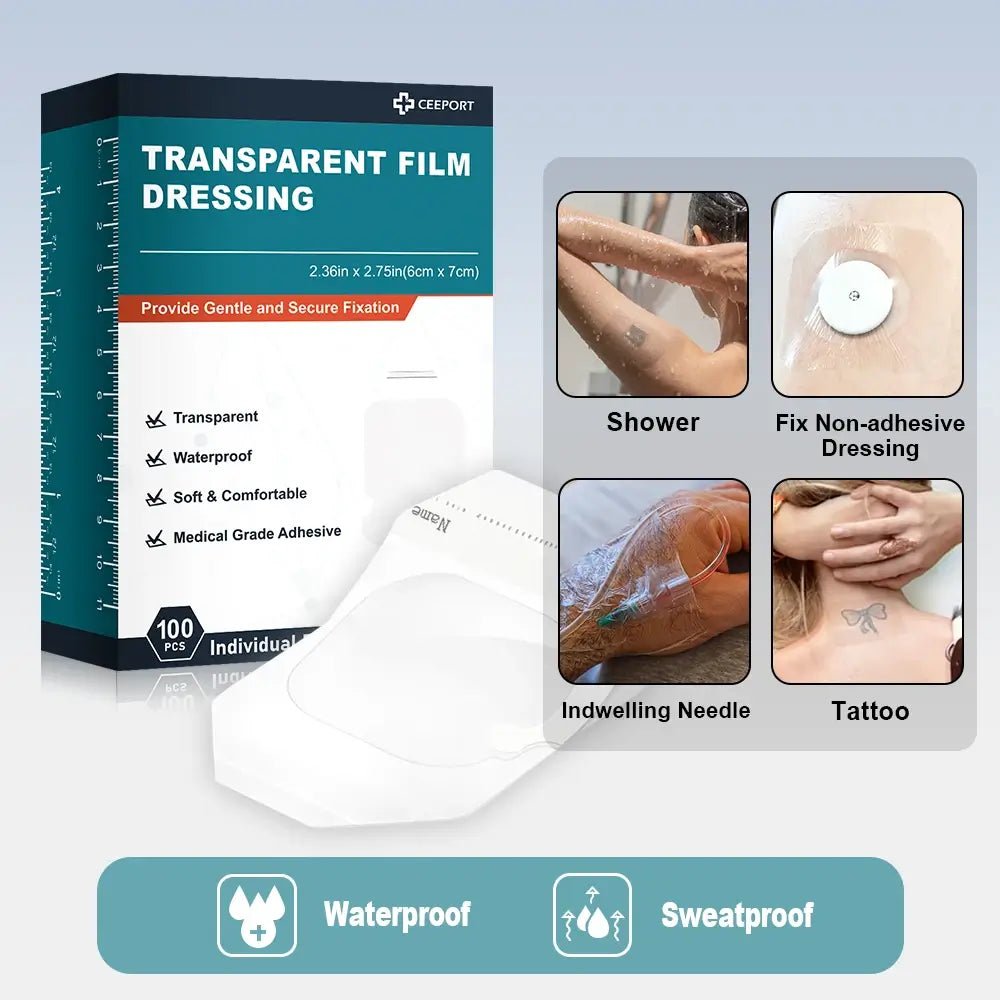
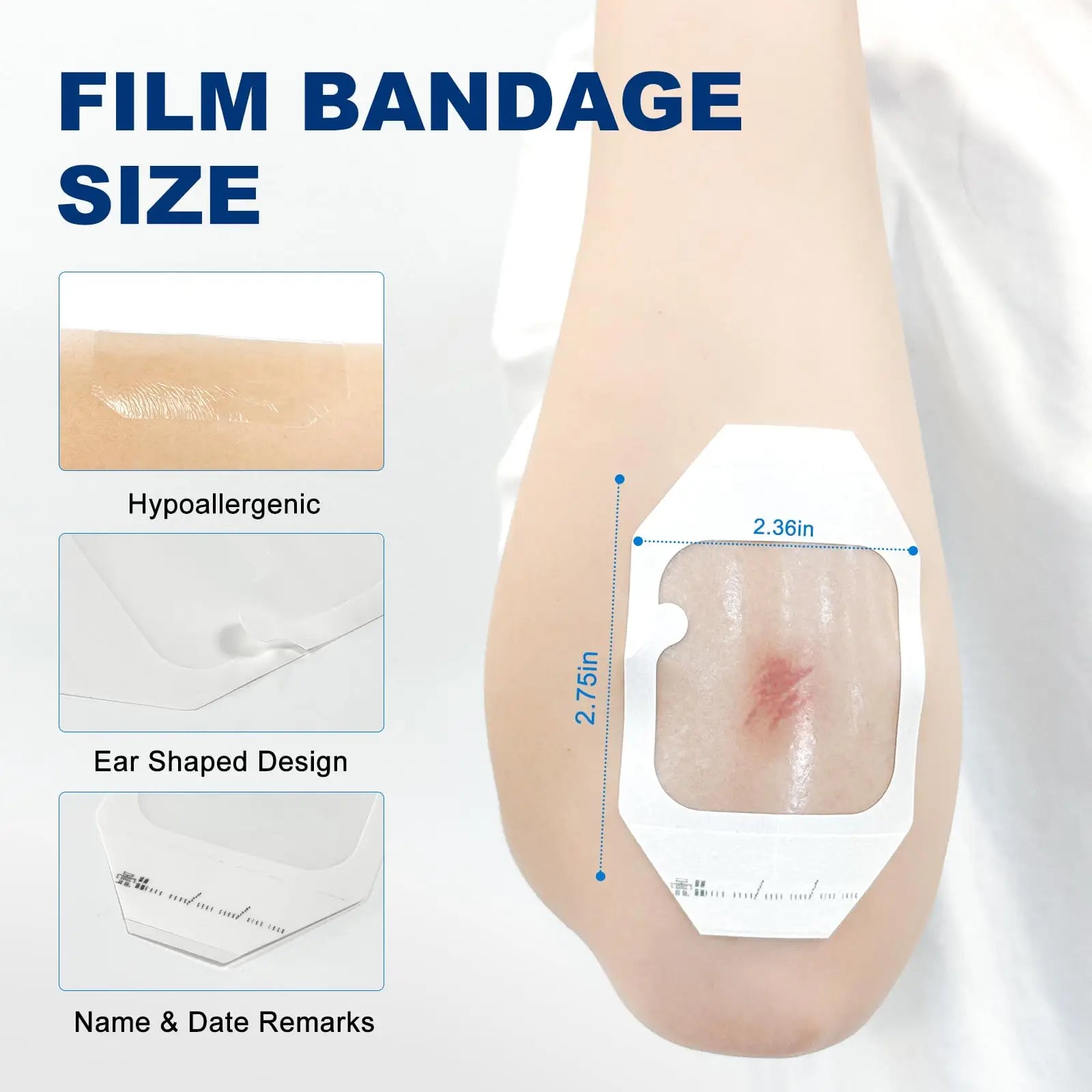


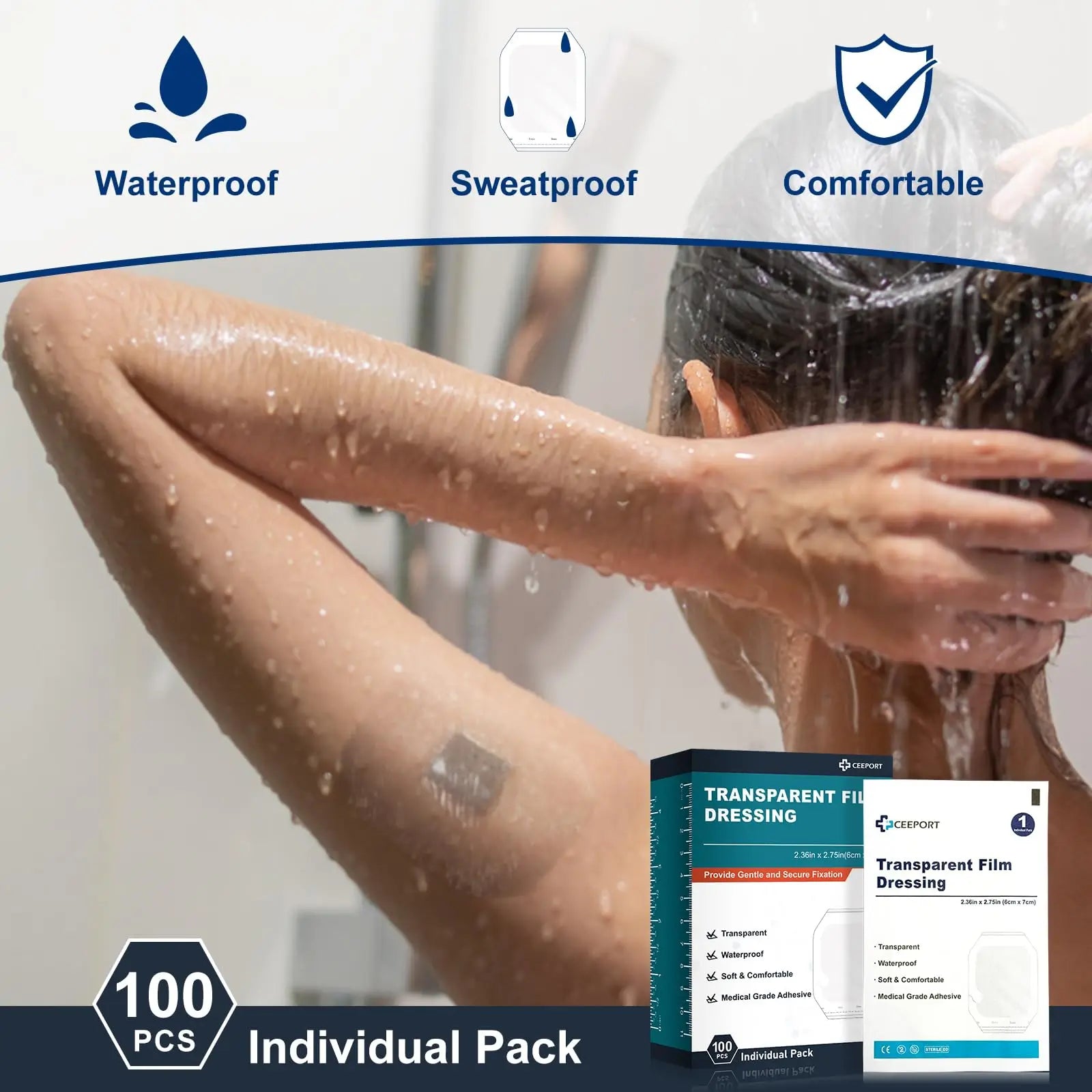
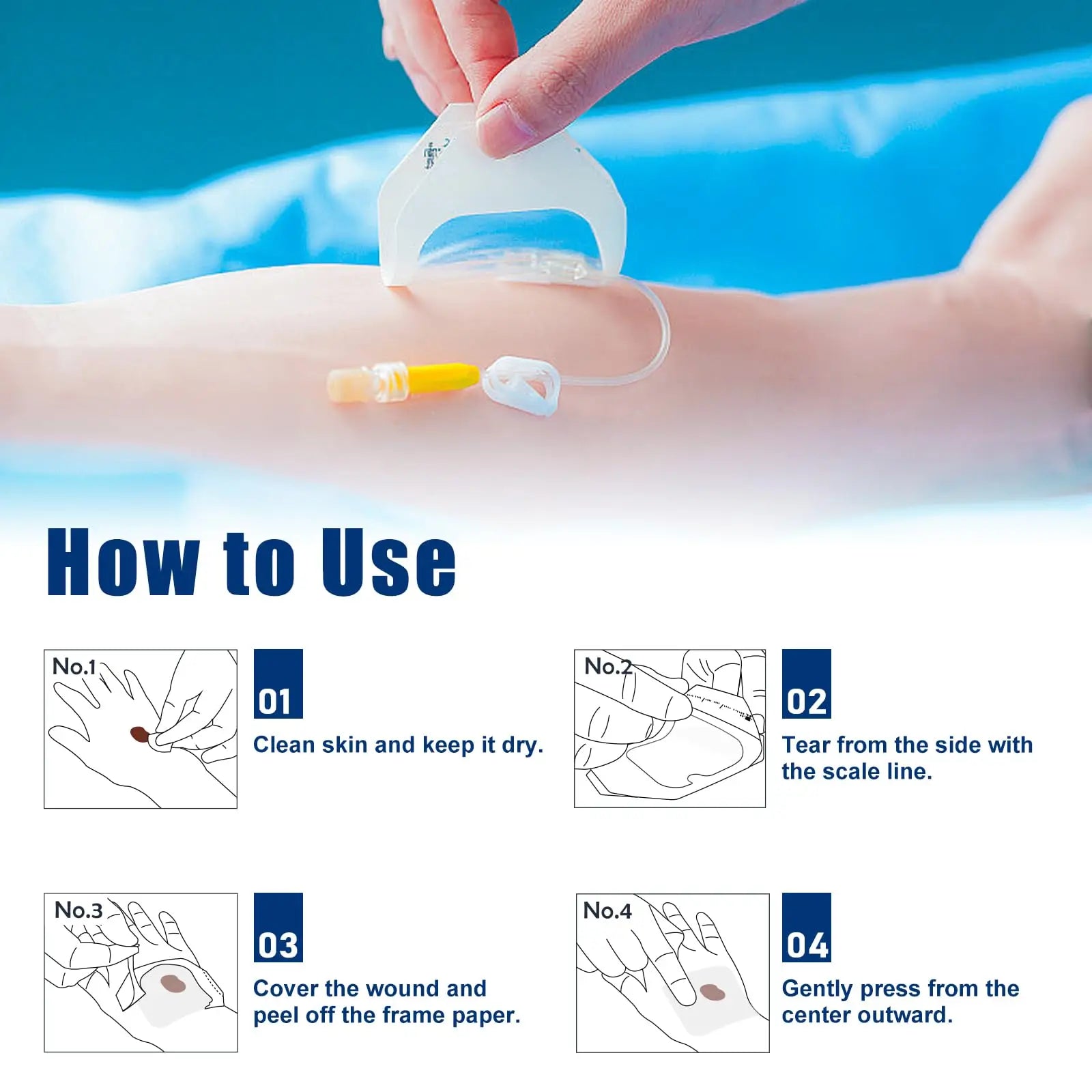
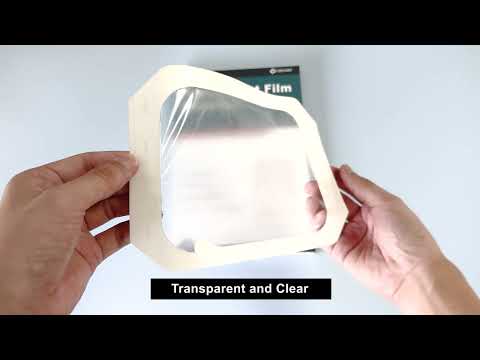
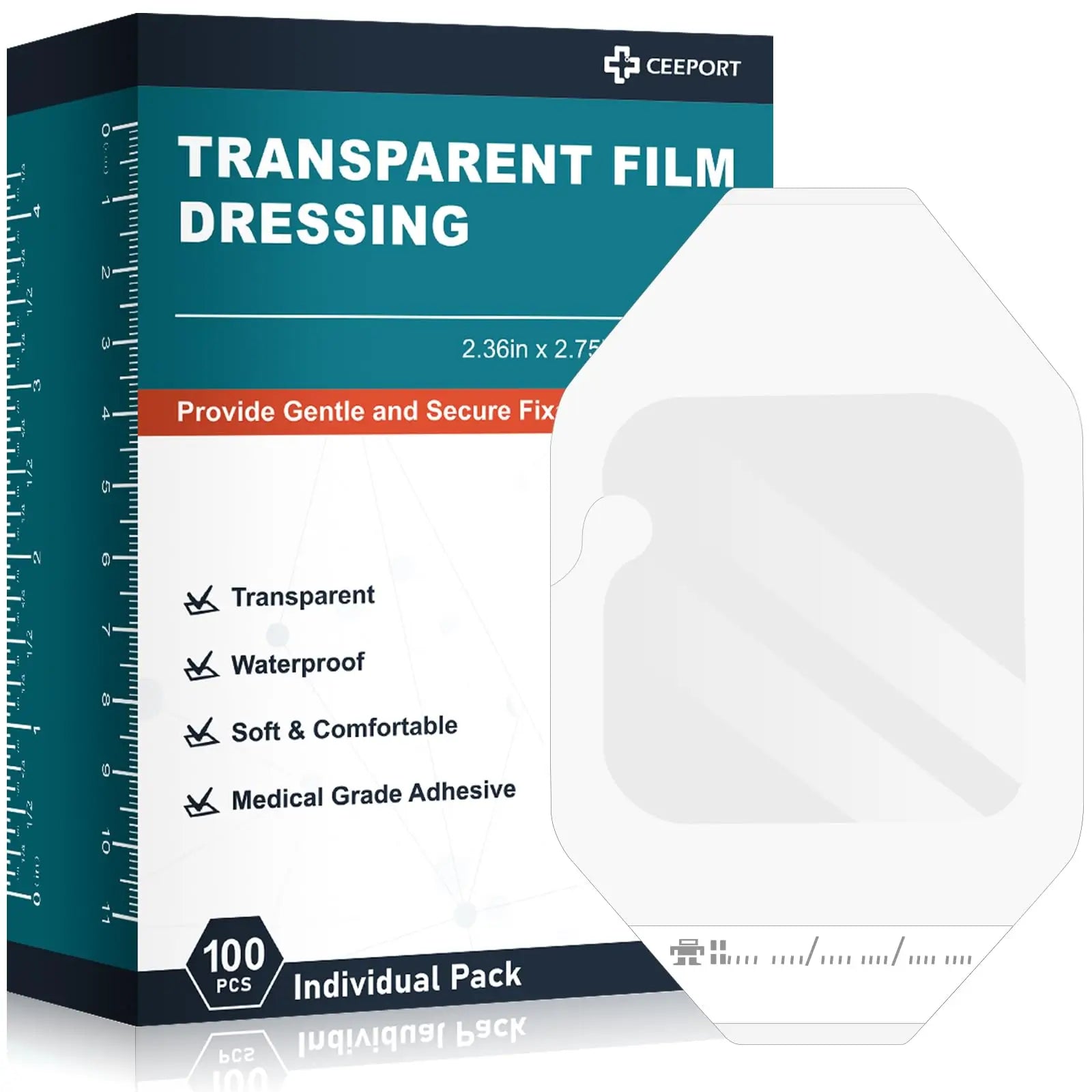
Keep Healing on Track with Waterproof Dressings for Wounds
Indications
- Partial-thickness wounds.
- Full-thickness wounds(secondary dressing).
- It can be used to secure and protect surface catheters such as indwelling needles and central venous catheters, shielding the exposed puncture sites from contamination and protecting superficial wounds from external pollution.
- Skin tears, lacerations and abrasions and to help prevent skin breakdown caused by friction to epidermis.
Pairs well with

Keep Healing on Track with Waterproof Dressings for Wounds
DETAILS
Material
- Glassine paper frame backing
- PU film
- Acrylic adhesive
- Glasine paper release paper
Advantage
- An easy-to-use window frame delivery.
- Easy to remove the over exudates or sweat, which makes it easy to observe the wound.
- Soft, comfortable and hypoallergenic, can be applicable to every part of body.
- Strong viscosity, keep on the wound up to 7 days.
- Transparent dressing applicable for the wrapping and fixing of all kinds of wound.
Cautions
- Not suitable for infected wounds.
- Not suitable for wounds with a lot of exudate.
- Not suitable for wounds with too deep or cavities.

Keep Healing on Track with Waterproof Dressings for Wounds
Product Overview
Our waterproof dressings for wounds provide a breathable yet fully water‑resistant barrier, letting you shower, swim, or wash hands without disrupting your healing process. Designed with a thin, flexible film, these waterproof dressings for wounds conform to skin contours, lock out moisture and bacteria, and maintain a stable healing environment.

Key Features & Benefits
True Waterproof Protection
Waterproof dressings for wounds block water, soap, and dirt, keeping the wound dry and clean under any condition.
Breathable & Comfortable
The micro‑perforated backing allows oxygen exchange while repelling liquids—essential for healthy tissue recovery.
Secure Adhesion
A gentle, hypoallergenic adhesive ensures the waterproof dressings for wounds stay in place for days, yet remove pain‑free.
Invisible Wear
Ultra‑clear, low‑profile design lets you go about daily life—no bulky bandages, just seamless protection.

How to Use Waterproof Dressings For Wounds
Clean & Dry: Gently cleanse the wound with saline and thoroughly pat the surrounding skin dry.
Measure & Cut: Trim the waterproof dressing for wounds so that it extends at least 1 cm beyond the wound edges.
Apply: Peel off the backing and smooth the dressing over the wound, avoiding wrinkles.
Maintain: Inspect daily and leave the waterproof dressing for wounds in place up to 7 days, or replace sooner if edges lift.
Ideal Use Cases
- Enjoy waterproof dressings for wounds that let you stay active without worry.
- Secure protection on joints and high‑motion areas.
- Maintain sterile coverage after minor surgeries or dermatology treatments.
- Hike, garden, or kayak while your waterproof dressings for wounds guard your recovery.
Easy to Use

Clean
Clean skin and keep it dry.
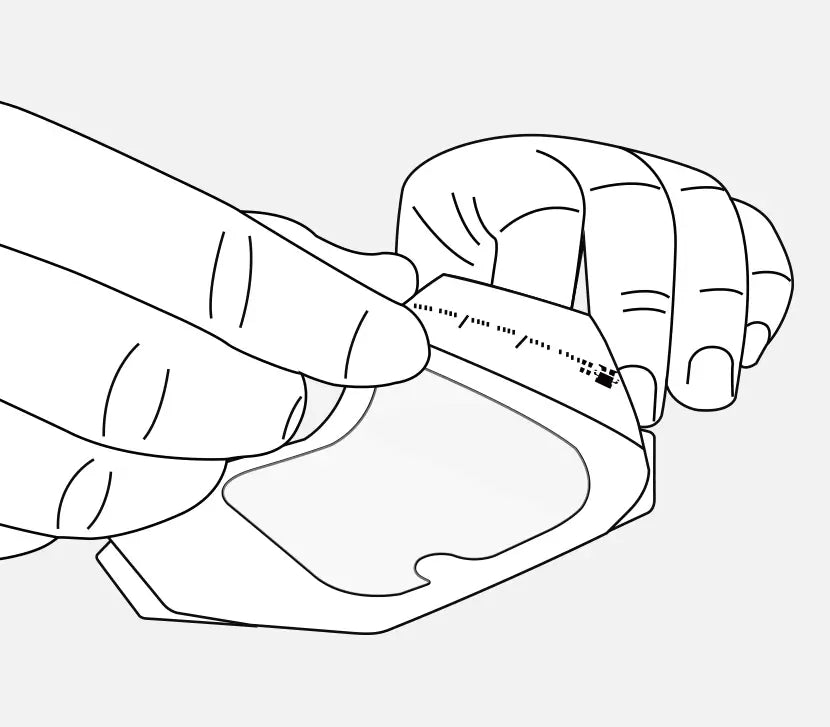
Tear
Tear from the side with the scale line.
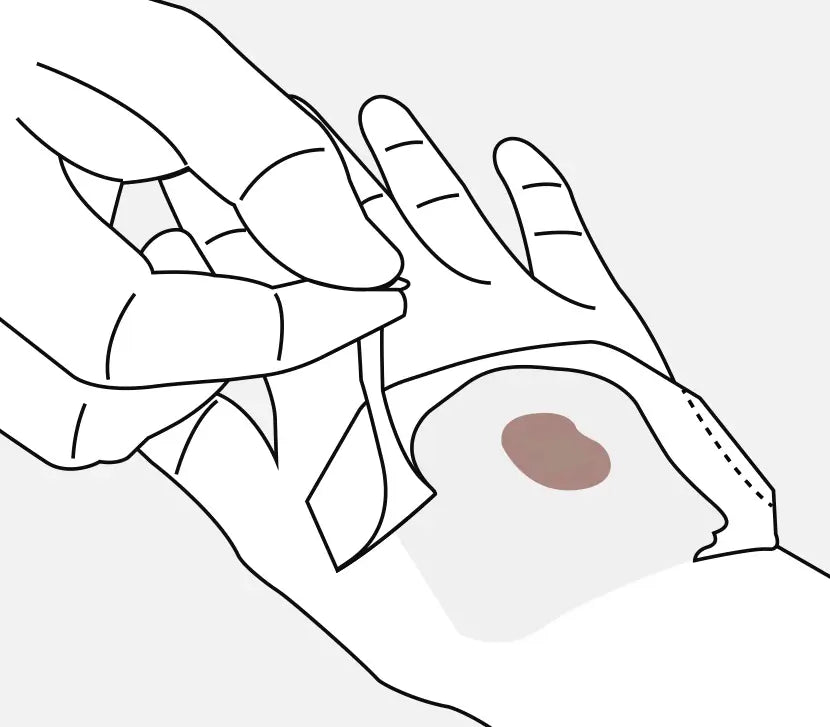
Cover
Cover the wound and peel off the frame paper.

Press
Gently press from the center outward.
You asked, we answered.
What types of wounds is this dressing suitable for?
- First-degree burns
- Superficial wounds and abrasions
- IV or catheter sites
- Healed wounds that need protection
- Secondary dressing to secure gauze or other dressings
- Post-surgical incisions
Is it waterproof?
Yes. Clear film dressings are fully waterproof, allowing patients to shower or bathe without removing the dressing, while still protecting the wound.
Can the dressing be used on infected wounds?
No. Transparent film wound dressings are not recommended for infected or moderate/heavily exuding wounds, as they are occlusive and may trap moisture or bacteria. For infected wounds, use a more absorbent or antimicrobial dressing.
How often should I change transparent medical dressing?
Typically, it can stay in place for up to 5–7 days, depending on the condition of the wound and skin. Change it if it becomes loose, soiled, or if fluid accumulates underneath.
Does it allow the wound to breathe?
Yes. While waterproof, the film is semi-permeable, allowing oxygen and moisture vapor exchange, which supports a moist healing environment and reduces risk of maceration.
Can it be used as a secondary dressing?
Absolutely. Transparent wound dressing are often used to secure other dressings like alginate, foam, or gauze, especially on contoured areas of the body.




